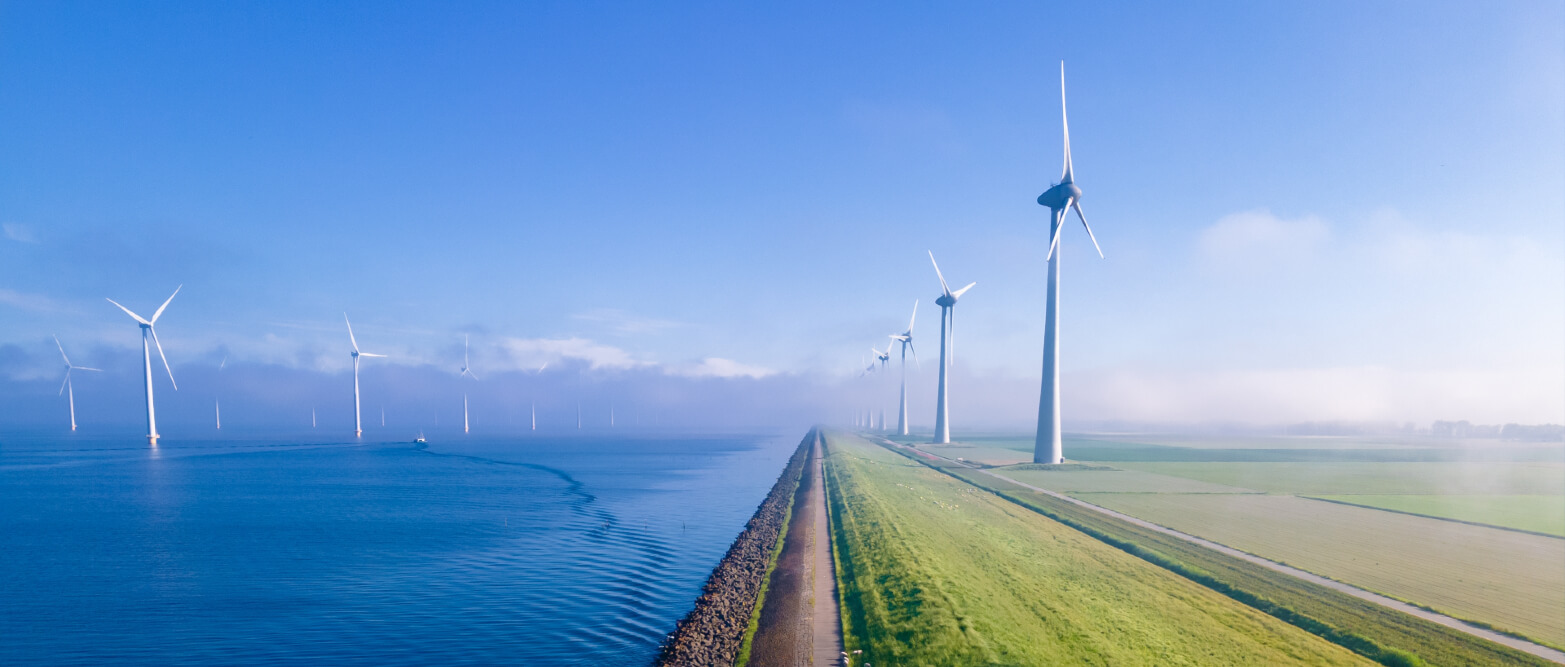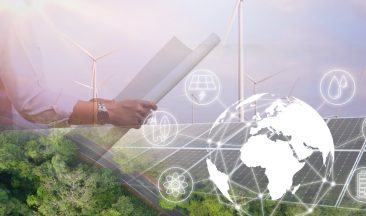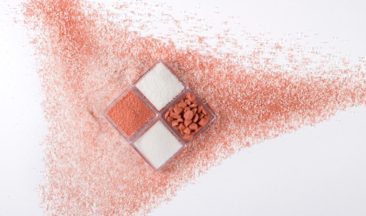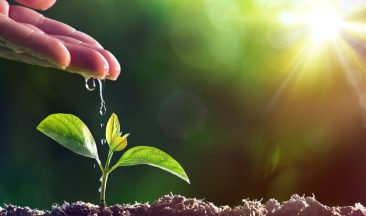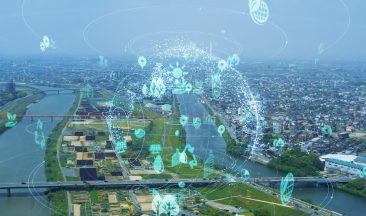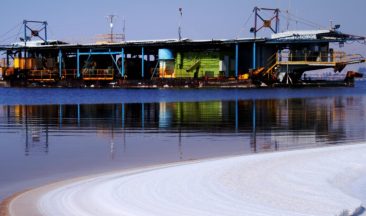Interview with ICL’s Phil Brown – Part Two
Lithium iron phosphate battery technology is key to the future of clean energy storage, electric vehicle design, and a range of industrial, household, and leisure applications. In Part Two of this two-part interview, ICL’s Phil Brown gives us some valuable insights into the LFP batteries market and future top energy trends. He also outlines how ICL is meeting the urgent requirement for affordable LFP battery materials.
ICL and the Push Towards Sustainable Energy
ICL’s President of Phosphate Solutions Phil Brown previously talked about the rapid growth of the LFP battery market. He explained how the ICL Group leveraged a century of experience in phosphate rock mining, and advanced phosphate production, to become one of the world’s leading suppliers of materials for lithium iron phosphate battery manufacturers.
We’ve already seen that the LFP battery market is expected to grow exponentially over the coming decade and that LFP batteries are potentially the key innovation that will make clean and reliable hybrid energy grids an affordable reality. What’s equally important is that the smart batteries themselves must be sustainable and exist as part of a circular economy.
ICL is not only a major global phosphates supplier, the company has its own sustainability mission. ICL has taken bold and decisive action to achieve energy independence and create a hybrid grid fueled by green energy. This pioneering project is part of ICL’s Green Sdom Initiative. Phil expands on how ICL’s underlying ethos is driving the direction of research and development into sustainable solutions including LFP batteries.
“When you look at the wider ICL strategy and mission, you’ll see that it directly influences research into sustainable battery materials. We’re actually passionate about helping to shape the transition to global clean energy. Developing sustainability with LFP battery materials is a natural fit from a business model process, chemistry standpoint with what we do, but also very much aligned from a strategy standpoint.”
ICL Innovations Across the LFP Spectrum
A general transition to clean energy requires a high level of product diversification. Design flexibility, scalability, and the ability to produce optimal (and affordable) energy storage solutions for specialized processes and niche markets are essential for a genuine energy revolution. ICL researchers are considering the entire spectrum of energy storage requirements and looking for improvements to existing LFP battery processes.
One area of focus is lithium iron phosphate itself. ICL is strongly encouraging R&D into morphology and particle size. ICL research centers and other ICL laboratories around the world are determined to understand and exploit the full chemical potential of all battery materials and to simultaneously reduce the capital intensity of existing processes. The goal is to be able to mass produce safe, smart, sustainable battery materials and facilitate the green energy revolution.
ICL also values scientific collaboration and strategic partnerships with other companies, organizations, and customers, particularly for end product specification and expansion into new markets. ICL is now firmly established in the US battery material supply chain but is keen to enter the European, South American and Asian markets, and to lower the cost of new technologies so that they become viable for the developing world.
LFP Batteries as Part of a Circular Economy
We touched earlier on ICL’s commitment to sustainability and environmental responsibility. This is a key principle that is at the heart of all the company’s ventures and it is an azimuth for the production of LFP battery materials (and all processes using advanced phosphate and bromine compounds).
One of the problems with traditional batteries is their safe disposal. ICL is determined that LFP batteries will be part of a wider circular economy and that they will be recyclable. ICL already operates a successful phosphate recycling unit in the Netherlands. The innovative Amfert site processes organic waste, including human sewage, animal manure, and ash to extract viable phosphates.
The Amfert initiative is part of ICL’s long-term strategy to shift from mining phosphate rock to using secondary sources of phosphates. The goal is to expand the process to integrate the manufacture and recycling of battery materials. To this end, ICL has established an innovation center for battery materials. There is also a pilot plant with a mandate to freely explore new processes and technologies. ICL is also collaborating closely with other stakeholders in the battery materials market and connected industries. Phil Brown takes up the narrative:
“Not only are we building this commercial facility here in St. Louis, Missouri, but we’re also building an innovation center for battery materials on the same site. We’re installing what is probably the world’s most comprehensive pilot plant with many different types of unit operations. These will allow us to practice and develop different technologies, improve on the existing ones, but also experiment with completely different ones. We’re collaborating directly with a number of external parties, including some really exciting startups, and of course, some well-established players in the battery materials markets to look at new technology.
This proactive approach extends to battery and phosphate recycling. We joined a consortium in Israel to get early first-hand knowledge of new developments. We have early access to new products that are coming out of recycling research and can test them in our own laboratories. We also gain important insights into the processing and collection of battery materials. The full process is a combination of internal R&D and investment in new R&D centers, innovation centers, and people, but also in external collaborations.”
Phosphate is a limited resource. Can you entirely eliminate dependence on phosphate mining?
There is a limited amount of phosphates in the world, although there’s more than we initially thought. We’re discovering phosphate reserves on the ocean floor and in mountainous regions and other places. Whether it’s cost-effective to extract them is another matter. I don’t know if we can entirely eliminate our dependence on mined rock phosphate. We’re simply pushing in that direction and putting a lot of resources into developing recycling processes.
We’re getting there on a practical level. Not one pound of phosphate waste leaves our manufacturing facilities. We reuse and recycle all of it, and we also work with a number of our customers who consume phosphate products and return their waste and by-product streams to the phosphate value chain.
None of it goes to landfills. A good example is phosphoric acid used in the metal treatment industry. We work with our customers to recycle that material and we bring it back into our value chain as a fertilizer. We have access to every point of the value chain and can process pretty much any phosphate material at any point in its lifecycle.
In its latest report, Fortune Business Insights estimates the Lithium Iron Phosphate Battery Market Size to Reach USD 49.96 billion by 2028 at a CAGR of close to 25%. What challenges and opportunities do you see for ICL as the demand for LFP batteries grows?
I’ll start with the challenges. I think the challenges are really going to be making sure that we stay focused on the growth opportunities and execution because as you said, the CAGR and the individual CAGR of battery materials are expected to be over 30%.
It will take a huge amount of effort, initiative, and focus just to keep up with it. We want to be a leader in this area in North America, and then expand into Europe and other markets.
I think one of the real challenges will be the pace of development. We need a dynamic organization in place to meet our full growth potential. There’s a hugely exciting opportunity here because the LFP battery market is growing much faster than all of our other core markets. That’s not to downplay other markets in the phosphate division like paints and coatings, food, pharmaceuticals and semiconductors, etc. that are also growing very well.
But the chance to participate in a market that’s set to grow at such a fast pace is a huge opportunity. We’re already at the heart of the US materials supply chain and we intend to make the most of it! But we can’t be complacent, we need to build the right organization and the right structure. We have to make wise strategic decisions and build long-term partnerships and collaborations to succeed in that type of growth environment. The bottom line is that we have to be able to deliver affordable materials and always stay (at least) one step ahead when it comes to new technologies.
That’s certainly a challenge! What emerging trends do you anticipate will shape the future of energy in general?
I think we’re witnessing the start of a significant transformation. As we’ve discussed earlier regarding electrification, it’s already underway. But as we move further down the path of electrification and start to reduce our reliance on fossil fuels, we are going to see a new age of innovation.
We’ve seen remarkable progress in energy collection over the past 15 to 20 years, particularly with solar and wind technologies. Now, what’s emerging is the storage aspect of this energy transition. The question is: how can we effectively capture and store power from these alternative sources?
Innovation isn’t limited to just generation and storage. It extends to the consumption and control of power. It’s not just about harnessing energy; it’s about how to use and manage it effectively. We need to maximize our efficiency in consuming energy while also gaining a deep understanding of how to control this new energy grid.
I think we’re going to see a whole new age of innovation. The new realities won’t simply transform the constellation of green energies that we’ve seen in the last generation – solar, wind, tidal, etc. The real adventure will be the emergence of viable energy storage and management solutions.
This shift represents a significant departure from the conventional distribution and power generation models of the past decade.
Given your experience in leadership at ICL, Phosphate Solutions, how have you seen the conversation and interest around LFP batteries evolve, and what excites you the most about the future of LFP batteries?
I think what excites me the most is seeing how far we’ve come and the developments that we’re making. When I think about my own personal journey with ICL and when we started looking at battery materials a decade ago, a lot of people, including myself, had doubts. We weren’t sure if the current system of energy generation and energy consumption could be changed. We all saw the benefits of moving towards sustainable energy, but there were technology barriers and adoption barriers. I think the most exciting thing to see is that we really have started down that road and the world is changing.
I really think there’s finally enough momentum to sweep aside obstacles and that we’re going to see rapid acceleration from this point forward. 10 years ago, there was a lot going on, but it wasn’t as noticeable. We’ll see the difference now in industry and the private sector, and we’ll also see governments getting involved from a regulatory standpoint, and thinking in terms of national infrastructures and strategic energy policies. We’re either at, or just over the tipping point now. The future of energy is green.
More on the subject:
ICL’s Energy Storage Solutions – Promoting Sustainability
The Future of Batteries In Renewable Energy Storage
Bromine Based Flow Batteries and Renewable Energy Storage Solutions
ICL and the Future of Clean Energy
ICl, with its commitment to sustainability and deep expertise in advanced phosphates, is playing an active role in shaping the emerging LFP battery market. Perhaps more than any other factor, it’s ICL’s acceptance that rock phosphate is a finite resource, and its ongoing investment in phosphate recycling, that sets it apart from other stakeholders in the LFP battery and clean energy industries.
The next decade will see exponential growth in the global LFP battery market and ICL will be a key player in supplying battery manufacturers with advanced materials. ICL’s collaboration with researchers, startups, and customers, and its willingness to build fair partnerships, will enable the rapid development of new LFP products and advance the development of energy storage and clean energy technologies.
The clean energy revolution can potentially transform the quality of life for everybody on the planet. If smart LFP batteries can provide effective storage solutions for hybrid grids, the goal to completely eliminate fossil fuels from the energy-generating process will be achievable within this generation.
